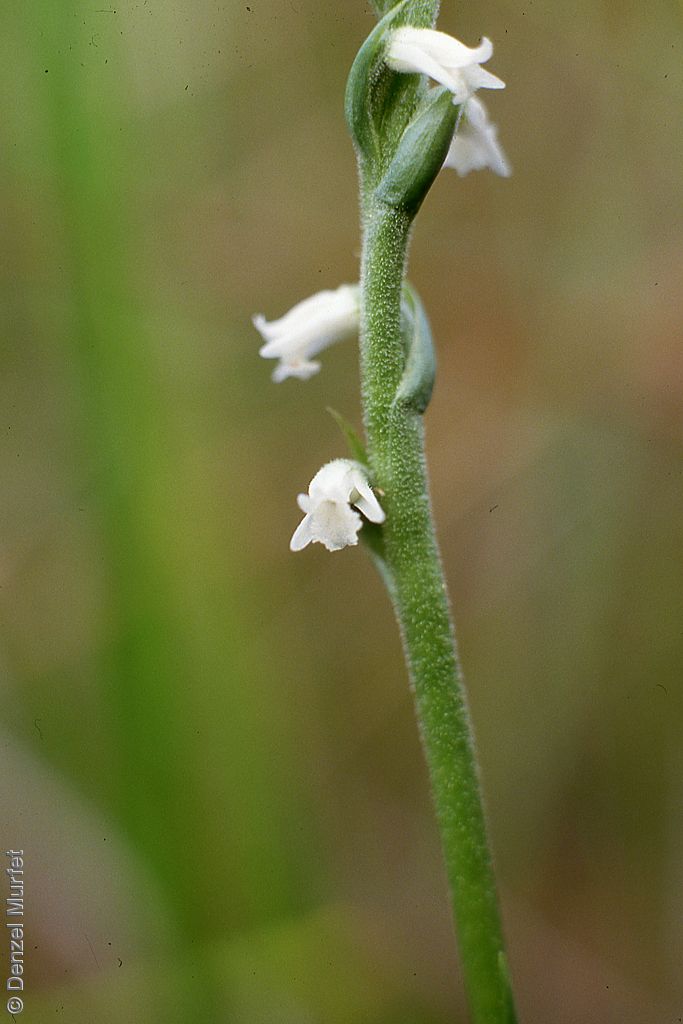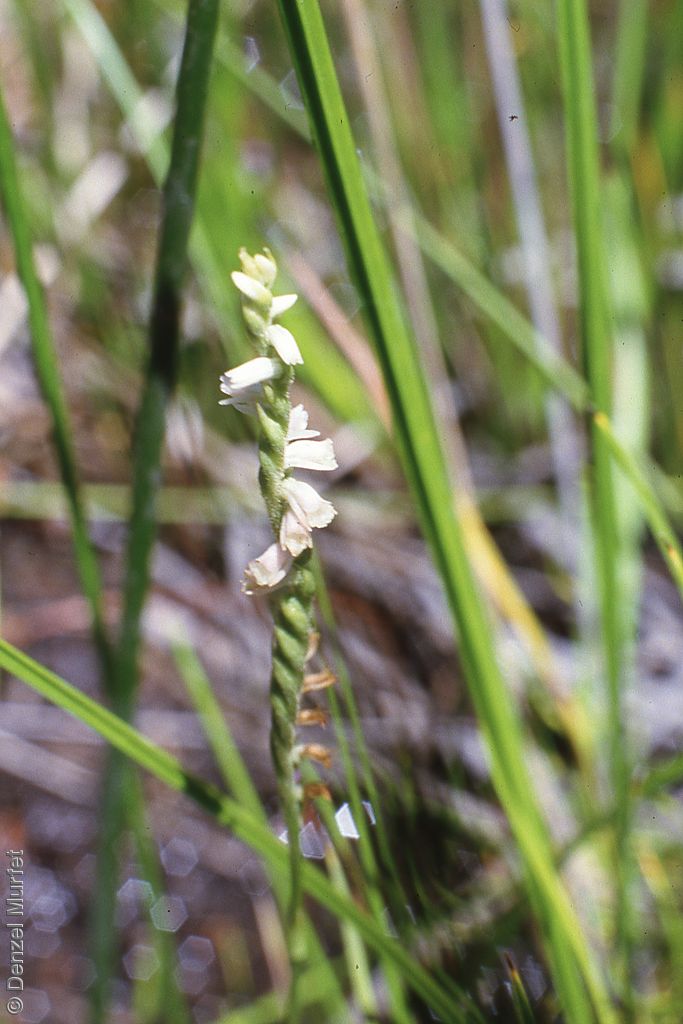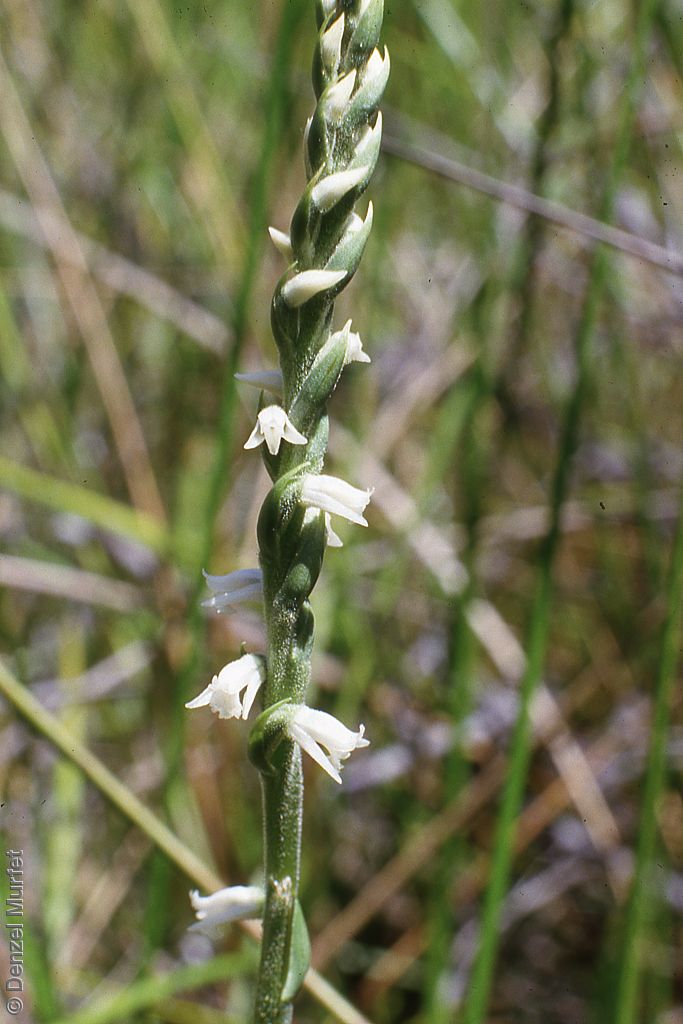





Prior names
Spiranthes sp. Late selfing white (R.Bates 909)
Spiranthes sinensis ssp. australis, partly
Spiranthes sinensis, partly
Common names
White Selfing Spiral Orchid
Late-flowering White Spiral-orchid
Late-flowering White Lady's Tresses
Etymology
Spiranthes from the Greek 'speira' meaning spiral and 'anthos' meaning flower, referring to the spiral arrangement of the flowers in the spike. Elytra from the Greek 'elytron' meaning cover, sheath, alluding to the closely appressed floral bracts which enclose the ovaries and often also the base of the flowers.
Distribution and status
Endemic to South Australia and only known from the Fleurieu Peninsula, growing in peaty bogs on sparsely vegetated mounds or on unsteady ground with Cryptostylis and Spiranthes australis. Native. Very rare in South Australia.
Herbarium region: Southern Lofty
NRM region: Adelaide and Mount Lofty Ranges
AVH map: SA distribution map (external link)
Plant description
Robust erect terrestrial orchid with 3-6 lanceolate, dull green leaves to 20 cm long and rigid flowering stem to 50 cm tall. Inflorescence a loose spike with 10-30, wholly dull white flowers arranged in a loose spiral. Ovaries large and glandular hairy, enclosed in large curved bracts. Segments to 7 mm long, lanceolate to narrow lanceolate, free and slightly recurved apically, forming a long slender tube. Labellum long and narrow with apex decurved but not broadly flared and hardly crenulate. This species differs from Spiranthes australis by never having pink flowers, duller more rigid habit, narrow segments and flowers hardly opening and short lived with rapidly enlarging ovaries and small labellum which is never broad and frilly. Flowering between February and March. Fruits are pale brown papery ellipsoid capsules along the spike. Seeds are very small orange-brown ellipsoid with a long cylindrical translucent brown mesh-like covering.
Seed collection and propagation
Collect seeds between March and April. Collect fat capsules as they start to dry and turn brown. Pods will split and release the seeds quickly and will require monitoring. To increase the chances of collecting mature pods, it is recommended that a small breathable bag (ie. Organza bags) be used to enclose the developing capsules. Place the capsules in a container that will hold fine seeds and leave to dry for a few weeks or until the capsule split. Then carefully hold the capsule and tap it gently to release the seeds. Store the seeds with a desiccant such as dried silica beads or dry rice, in an air tight container in a cool and dry place, refrigerator or in liquid nitrogen.